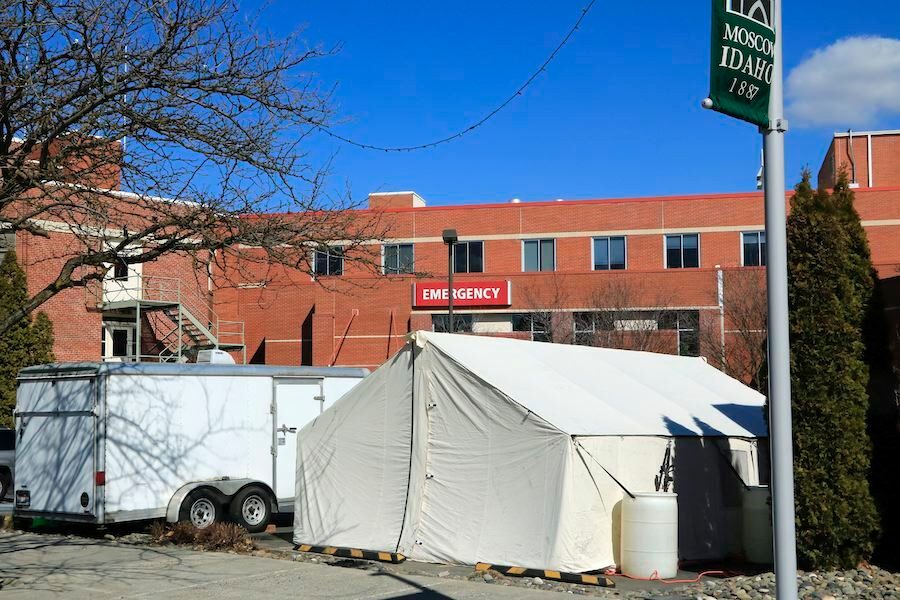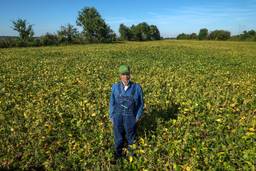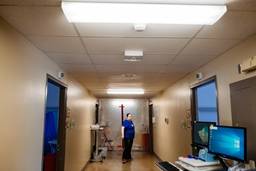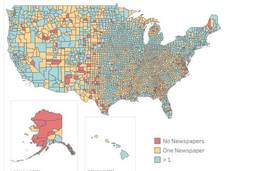Between Dwindling Revenue and Rising Virus Cases, Rural Hospitals Face a Reckoning
April Simpson

Editor’s Note: This article was originally published by Stateline, an initiative of The Pew Charitable Trusts.
As the Covid-19 pandemic battered large, metropolitan areas this spring, rural hospitals prepared to be next on the frontlines.
But in order to ready their facilities for a potential surge in patients, those small hospitals had to forgo many of their most profitable operations. Months later, a few rural hospitals are fighting outbreaks. But others have empty beds, further threatening their viability in an era of shrinking health care options for people living in rural communities.
“If you were already in a very thin margin, and you lose a lot of your operating revenue because you’re making space and personnel available — and then you’re not using them — it’s pretty powerful logic that you’re in big trouble,” said Keith Mueller, director of the RUPRI Center for Rural Health Policy Analysis at University of Iowa.
Pandemic-related federal money has helped struggling rural hospitals stay afloat. But as Congress considers additional aid this month, advocates and policymakers would like to move beyond stopgap measures to change the hospitals’ long-term trajectory.
“We’re due for reckoning in our rural hospital policy,” said Ge Bai, associate professor of health policy and management at the Johns Hopkins Bloomberg School of Public Health in Baltimore.
As the pandemic persists, it’s unclear how long struggling rural hospitals can hang on.
Rural hospitals have long been fighting for their survival. Since 2010, 128 rural hospitals have closed, including a record 18 hospitals last year. Even more rural hospitals were on track to shut down this year until Congress in March approved $100 billion to health care providers in the CARES Act. The support included $10 billion in targeted funding that was allocated based on operating expenses before Covid-19.
Earlier this month, the U.S. Health and Human Services Department announced another $1 billion targeted to certain hospitals that serve rural populations.
The CARES Act support was intended to make hospitals whole because of lost revenue. It was not meant to bolster rural hospitals who already were in terrible shape, according to experts. Yet “as healthy patients delay care and cancel elective services, rural hospitals are struggling to keep their doors open,” the Health Department said in distributing the funding.
Additional federal help came in $75 billion from the Paycheck Protection Program, which provides forgivable loans used for payroll costs, $150 million in Small Rural Hospital Improvement grants to support Covid-19 activities and increased Medicare payments for treating Covid-19 patients.
At Bibb Medical Center in Centreville, Alabama, stations with personal protective equipment, known collectively as PPE, are set up outside isolation rooms, including a nine-bed Covid-19 unit. The center is functioning as a step-down facility for Covid-19 and other patients who aren’t well enough to return home but don’t need the level of care provided by a tertiary hospital. It’s fairly quiet given limits on visitation, said CEO Joseph Marchant.
“The continued challenge for the rural facilities is just understanding while there’s been some funding provided early on, we really feel like these challenges are going to go on for quite a while,” Marchant said. “We hope this support continues to help some of these facilities that are operating.”
A Slow Recovery
Hospital losses may far outweigh federal relief. The American Hospital Association estimates hospitals and health systems lost $202.6 billion between March and June and are projected to lose an additional $120.5 billion through the end of 2020. The slow recovery of inpatient and outpatient volumes adds to the strain.
The association’s findings are based on an electronic survey representing 1,360 member hospitals across 48 states and Washington, D.C. Rural hospitals and health care systems represented about one-third of respondents.
“When you add Covid, there’s no question that the targeted rural funding with the other CARES Act funding has helped, but we’ve not covered at this point the cost of lost revenue, nor the expenses associated with Covid,” said Dr. Donald Williamson, president and CEO of the Alabama Hospital Association.
Rural hospitals are buying N95 masks, gowns and other PPE that are being used with all patients regardless of Covid-19 status. The additional costs cut further into their already thin margins. Before the pandemic, 47% of rural providers operated in the red.
So far this year, 12 rural hospitals have closed across the country, including four in April before they could benefit from federal support.
Texas leads the country in rural hospital closures. Roughly half of the state’s rural hospitals are considered vulnerable, according to the Chartis Group, a healthcare analytics firm. Prior to the federal relief, John Henderson, president and CEO of the Texas Organization of Rural and Community Hospitals (TORCH), worried that the pandemic would force anywhere from six to 12 rural Texas hospitals to shutter this year.
“No doubt when this thing’s over, if we don’t reimagine the way we take care of people and the way we fund services, rural hospitals will still have challenges,” Henderson said.
Trying Times
To prepare for a surge in Covid-19 patients, many states required that hospitals suspend or reduce elective surgeries, such as profitable knee or hip replacements, or postpone or divert patients to a different clinical environment.
“All hospitals suffered when they responded immediately to the request to try to flatten the curve of the pandemic by essentially shutting down every way you make money,” said Peggy Wheeler, vice president of rural health and governance at the California Hospital Association.
Outpatient care accounts for 50-70% of rural hospitals’ income, said Maggie Elehwany, government affairs and policy vice president at the National Rural Health Association. Some hospitals in rural and smaller metropolitan areas have furloughed employees to maintain financial stability.
Williamson in Alabama is bracing for the possibility hospitals will once again reduce elective procedures as new cases rise.
Over the past month, Texas Gov. Greg Abbott, a Republican, has reversed course. After allowing procedures to return in the spring, he again suspended them in most of the state with the exception of procedures deemed pressing and “medically necessary.”
“The trying times will be the next few weeks to get through the surge,” said Kelly Cheek, president of the Texas Rural Health Association board of directors.
Most rural hospitals say they are in good shape with regard to PPE, said Henderson with TORCH.
“There’s significant bed capacity in rural Texas,” Henderson said, “but there aren’t nurses and there aren’t ventilators.”
Staffing is another challenge. Shortages prompted Medical Center Health System, a 403-bed facility with multiple clinics throughout Odessa and serving 17 West Texas counties, to decline transfer patients earlier this month from regional hospitals outside of Ector County. Between 40 and 50 staff are currently out because they’re quarantining at home with the virus or have a family member who’s positive. The hospital announced last week that one of its employees died after contracting the virus.
The center has weekly calls with its rural partner hospitals to share information and resources. While the hospitals would typically send their sickest patients to the transfer facility, Medical Center Health System is counseling some of the smaller hospitals to retain patients instead, said CEO Russell Tippin.
“We’re just trying to keep our beds open for the sickest of the sick,” Tippin said. “When those small hospitals have sick people — and no doubt they’re sick — I think our job as the regional transfer facility is to work with them and help them gain skills and confidence.”
For smaller hospitals, treating Covid-19 is forcing doctors into new, often difficult situations, Tippin added. “For all my friends in the rural areas, I know they’re scared,” he said. “They’re having to get out of their comfort zones, but they are providing the same care we are providing.”
In Texas’ Covid-19 hotspots, such as Hidalgo County on the Mexico border closer to the Gulf Coast, hospitals have struggled to find beds for new patients.
Earlier this week, Mississippi’s state health director warned that hospitalizations are on the verge of pushing the system over capacity. On Monday, there were nine hospitals with zero intensive care unit beds statewide, said Dr. Thomas Dobbs, and one bed available among the four largest medical centers in the Jackson-metropolitan area.
Preparing for a rush of Covid-19 patients has been costly to rural Pennsylvania hospitals that invested in PPE and cut back on outpatient services and elective surgeries.
They’re not seeing large numbers of Covid-19-positive or potentially positive patients, said Lisa Davis, director of the Pennsylvania Office of Rural Health. Many patients who test positive are being sent home to recover. Meanwhile, most inpatient stays come in as a result of an emergency department visit, and fewer people are being treated. As a result, hospitals are “a little bit empty,” Davis said.
“To stay alive, they need patients in the beds,” said Gerard Anderson, professor of health policy and management at the Johns Hopkins University Bloomberg School of Public Health.







